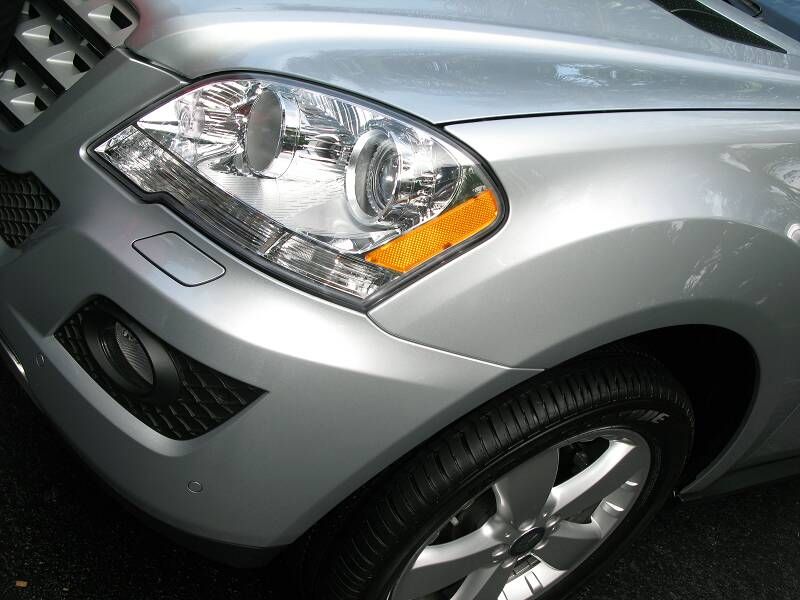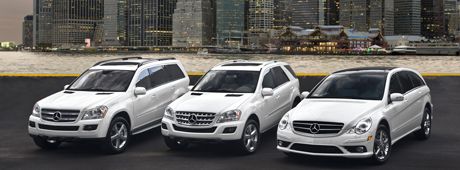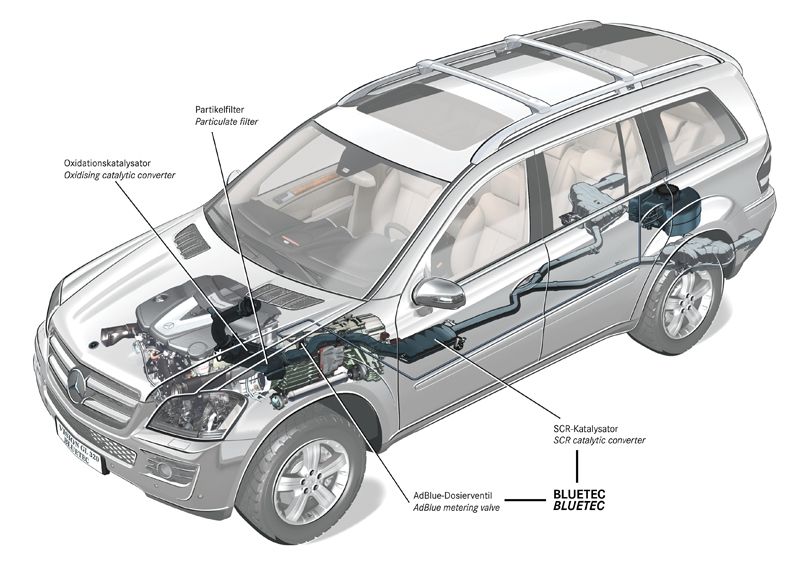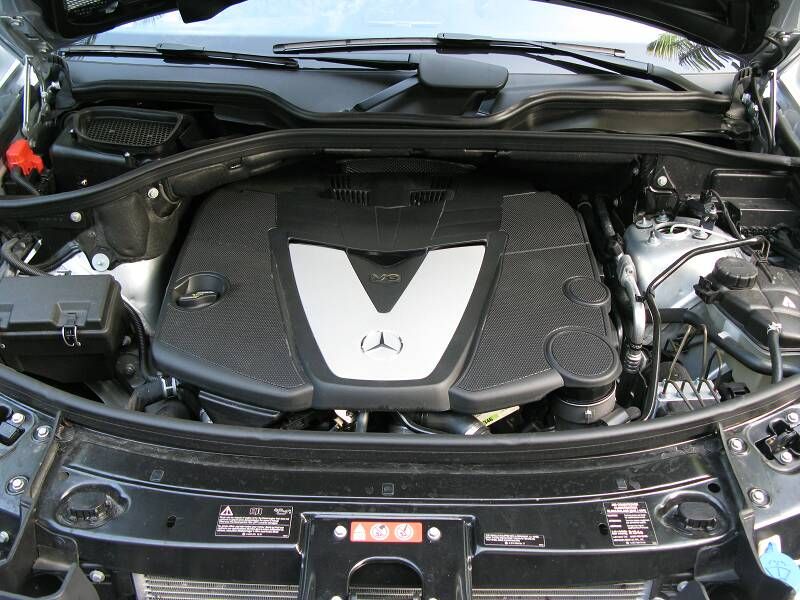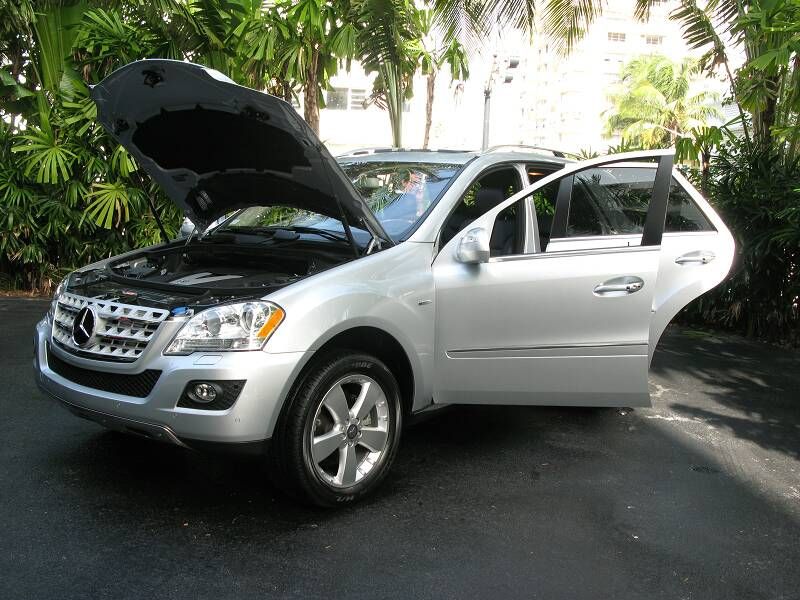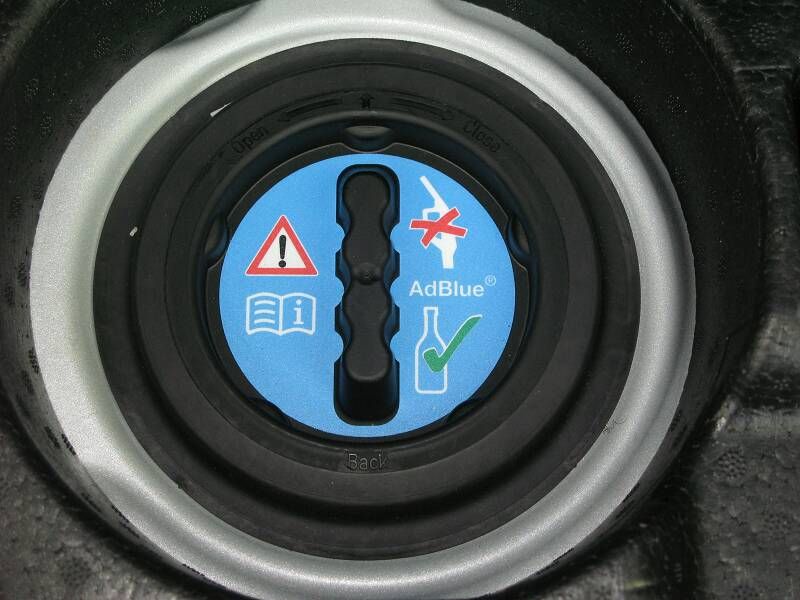We take an exclusive look at Mercedes new BlueTEC Diesel.
Diesel has been a dirty word in the U.S. for numerous years. Unfortunately for many people, the fuel brings to mind images of black smoke oozing from tailpipes or large trucks with a thirst for power. But times are changing. For decades diesel has been the building block for fuel economy technology, and now it has also shifted into leading the way to cleaner emissions. One prime example of this is the new Mercedes BlueTEC engine, and it has given the TopSpeed Team access to preview the new diesel.
Most diesel fans know that Mercedes has been offering a
low-sulfur enging called BlueTEC since 2006 in the E-Class, but Mercedes has a new innovation for the engine called AdBlue. This additive to the exhaust reduces part of the harmful gasses into harmless nitrogen and water vapor. For more information on the science behind AdBlue, watch the official video below.
The engine will be available in U.S. this fall on ML, GL, and R-Class SUVs. Each car will receive similar V-6 engines, each making 210 bhp and 398 lb.ft. of torque. An example of performance is the GL 320 BlueTEC achieves an estimated 23 mpg (highway), which Mercedes claims is a benefit of approximately 20 to 40 percent over a comparable gasoline engine.
BlueTEC was developed to meet with new standards in the U.S. (BIN5), which set emission regulations nationwide. The new BlueTEC not only meets this standard, but also meets forthcoming European regulations (EU6), which are even tougher.
Nitrous oxide (NOx) is the gas created during combustion of both gasoline and diesel. Because the combustion of diesel creates more power it also creates more NOx. This high-pollutant tendency put the diesel engine under scrutiny from regulators.
The advantage of the new BlueTEC engine is in the additive. In these new models, AdBlue – a harmless, liquid urea solution – is injected into the exhaust. This releases ammonia, which, in the SCR catalyst downstream, converts up to 88 percent of NOx emissions into harmless nitrogen gas and water.
Since AdBlue is a liquid, it will need storage and servicing.
Most of the SUVs will be getting a separate seven-gallon tank to hold the additive. According to Mercedes, the customer will not have to worry about filling the tank because it should last about 10,000 miles and will be refilled during regular scheduled maintenance.
The BlueTEC engine with the AdBlue is a proven system. Although it is new to the U.S., Europe received this system when we received our first BlueTEC engine in 2006.

